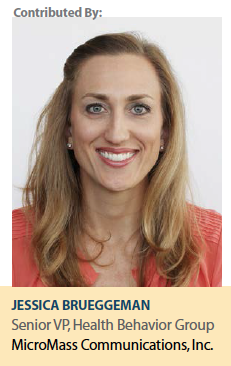 In today’s healthcare environment, there is more pressure to deliver optimal patient outcomes with greater efficiency. Traditional marketing approaches that rely on messaging to promote patient acceptance of therapy and adherence are not enough to drive real-world impact.
In today’s healthcare environment, there is more pressure to deliver optimal patient outcomes with greater efficiency. Traditional marketing approaches that rely on messaging to promote patient acceptance of therapy and adherence are not enough to drive real-world impact.
To stay relevant, the pharmaceutical industry needs to find ways to deliver solutions that go beyond driving awareness, promoting access, and reinforcing benefits. Patient services are the favorable channel to impact patient outcomes and optimize experience on therapy. But, in order to truly make an impact, the model needs to change. It’s not enough to address the challenges that come from product-centric services. These services need to address the whole patient picture.
Let’s reconstruct the model.
What’s the solution?
Address the whole patient needs.
The traditional approach to building patient services is to focus on access, product administration, and condition education, but the new model needs to consider the whole patient experience.
Decades of published behavioral science research supports the evidence that when the psychosocial needs of patients are addressed, they not only have a better experience on therapy, but patients also stick with their appropriate therapy longer. They have more engaging conversations with their healthcare team, and they take a more active role in managing their condition.
Patients need knowledge and access to the product; however that’s not enough to improve outcomes.
Pharma companies needs to address both the clinical and psychosocial needs of patients along the treatment journey.
How can pharma address whole patient needs?
The whole patient approach supplements conventional awareness efforts with active motivation and skill-building programs to accelerate product awareness and adoption and drive optimal outcomes.
Evidence-based approaches, such as cognitive behavioral techniques, health coaching, problem solving, self-affirmation, and coping strategies are key to unlocking better outcomes. These approaches aren’t about providing tips or persuading patients to make changes. They are fundamentally different because they engage patients in a way that actively shifts attitudes, builds skills, and changes behavior.
How can this be implemented?
There are many ways that brands can incorporate a whole patient approach throughout their marketing efforts from prelaunch to postlaunch. This type of approach not only drives positive patient outcomes and experiences, but it can help differentiate brands and create valuable partnerships with providers, payers, and advocacy groups. Examples of whole patient approaches within the industry include:
1. Data generation through landmark surveys.
Before launch, conduct surveys with patients and providers to demonstrate a real-world picture of challenges, including clinical and psychosocial needs.
Then, in partnership with Key Opinion Leaders and advocacy groups, develop solutions that address these real-world needs that can be disseminated at product launch.
2. Promote real-world product success with specialized patient services.
Health coaching is an evidence-based approach to address lifestyle behaviors that are critical in chronic disease. Multiple brands have developed phone or web-based coaching solutions that have been integrated into their branded patient support programs. These initiatives encourage the greatest chance of success for patients.
3. Whole patient approach using clinical field teams.
Some brands are recognizing that their field teams have an opportunity to partner with customers to achieve desired outcomes.
In addition to product training, nurse educators are being trained in behavior change techniques to help providers and patients address real-world challenges with their condition and therapy.
What’s holding you back?
Although pharma may not see themselves as service providers, pharma has been doing it for years: providing wrap-around services to make products easier to access and use. Addressing the whole patient needs is an essential starting point for pharma. From drug development to commercialization, the door is open for pharma to stay relevant, deliver meaningful innovation, and drive optimal health outcomes. By reconstructing strategies, patients will be encouraged to build lasting skills that lead to behavioral change and improved outcomes. (PV)
More than 20 years ago, MicroMass Communications, Inc. recognized that achieving optimal outcomes required more than knowledge and access. It requires a specialized approach that actively shifts attitudes, builds skills, and changes behavior.
For more information, visit MicroMass.com and WeAreSpecialists.com.










